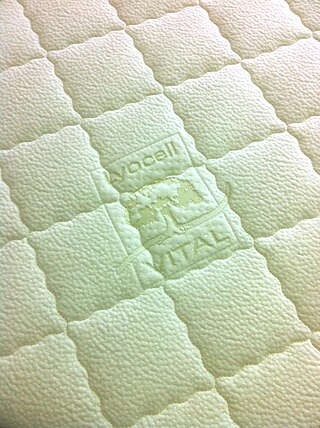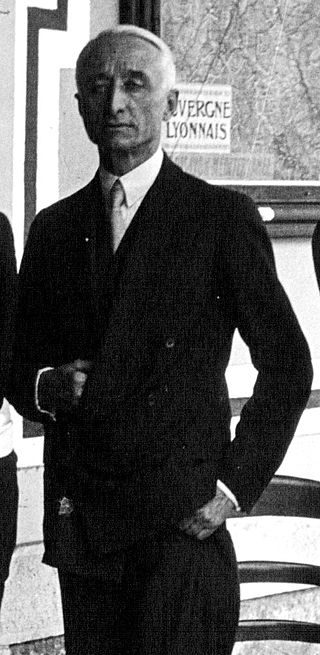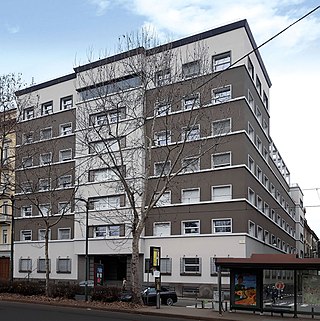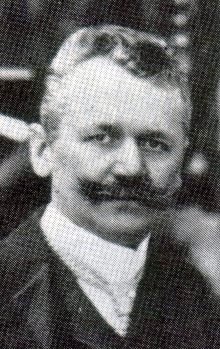History
The Società di Navigazione Italo-Americana (SNIA) was founded as a shipping company in 1917 in Turin by the financier Riccardo Gualino of Turin. Giovanni Agnelli of Fiat was vice-president of SNIA from 1917 to 1926. Gualino and Agnelli became involved in the profitable transport of US aid to Europe in 1917. In the early 1920s SNIA began to manufacture artificial textile fibers. Artificial cellulose fibers had been produced before the war, but SNIA was the first to mass-produce rayon. The company was given the new name of SNIA Viscosa (Società nazionale industria e applicazioni viscosa, National Rayon Manufacturing and Application Company).
Gualino made huge investments in SNIA Viscosa. By the mid-1920s SNIA Viscosa was the largest company in Italy in terms of capital. By 1926 SNIA Viscosa had become the second-largest rayon producer in the world. The United States produced more rayon in total, but Italy was the world's largest rayon exporter. In 1927–28 Courtaulds and Vereinigte Glanzstoff-Fabriken (VGF) gained control of SNIA Viscosa. A German director of VGF, Karl Scherer, replaced Gualino as head of the firm and cut output drastically. The foreign intervention was seen as humiliating by the fascists. In 1930 Gualino was forced to sell his share in SNIA Viscosa and many other investments to try to reduce his debt. By this time the company had lost its leadership position, but in 1931 it was the first to manufacture a short-fiber flock, and the first to produce cellulose from reeds to eliminate dependence on imported materials.
Only barely surviving the crash of 1929, SNIA recovered under the leadership of Franco Marinotti and enjoyed prosperity until World War II, when the manufacturing plants were heavily bombed by the Allies. Post-1945, Marinotti again restored the firm to being a profitable enterprise. After acquiring Bombrini-Parodi-Delfino in 1968, [7] SNIA also produced weapons systems such as the SNORA and SURA-D rockets and Medusa rocket system. [8] SNIA later also manufactured medical products following its merger with Sorin Group in the 1980s.
In November 2009, SNIA's debt reached almost 25 million euros. As of December 2009, SNIA was to present its debt-restructuring plan to the Milan court system for approval. [9] The attempt to save the firm failed in April 2010 and the firm was declared insolvent by the Court of Milan. [10] In December 2010, the Italian Stock Exchange ordered the withdrawal of SNIA ordinary shares and bonds from the market. [11]

Rayon, also called viscose and commercialised in some countries as sabra silk or cactus silk, is a semi-synthetic fiber, made from natural sources of regenerated cellulose, such as wood and related agricultural products. It has the same molecular structure as cellulose. Many types and grades of viscose fibers and films exist. Some imitate the feel and texture of natural fibers such as silk, wool, cotton, and linen. The types that resemble silk are often called artificial silk. It can be woven or knit to make textiles for clothing and other purposes.
Synthetic fibers or synthetic fibres are fibers made by humans through chemical synthesis, as opposed to natural fibers that are directly derived from living organisms, such as plants or fur from animals. They are the result of extensive research by scientists to replicate naturally occurring animal and plant fibers. In general, synthetic fibers are created by extruding fiber-forming materials through spinnerets, forming a fiber. These are called synthetic or artificial fibers. The word polymer comes from a Greek prefix "poly" which means "many" and suffix "mer" which means "single units"..

In biochemistry, cellulose acetate refers to any acetate ester of cellulose, usually cellulose diacetate. It was first prepared in 1865. A bioplastic, cellulose acetate is used as a film base in photography, as a component in some coatings, and as a frame material for eyeglasses; it is also used as a synthetic fiber in the manufacture of cigarette filters and playing cards. In photographic film, cellulose acetate film replaced nitrate film in the 1950s, being far less flammable and cheaper to produce.

Lyocell is a semi-synthetic fiber used to make textiles for clothing and other purposes. It is a form of regenerated cellulose made by dissolving pulp and dry jet-wet spinning. Unlike rayon made by the more common viscose processes, Lyocell production does not use carbon disulfide, which is toxic to workers and the environment. Lyocell was originally trademarked as Tencel in 1982.

Giovanni Agnelli was an Italian businessman. He cofounded Fiat S.p.A, an automotive industrial company, in 1899.
Courtaulds was a United Kingdom-based manufacturer of fabric, clothing, artificial fibres, and chemicals. It was established in 1794 and became the world's leading man-made fibre production company before being broken up in 1990 into Courtaulds plc and Courtaulds Textiles Ltd.

Bamboo textile is any cloth, yarn or clothing made from bamboo fibres. While bamboo was historically used only for structural elements, such as bustles and the ribs of corsets, in recent years various technologies have been developed that allow bamboo fibre to be used for a wide range of textile and fashion applications.
Bombrini-Parodi-Delfino, was a chemical company founded in 1912 by Giovanni Bombrini and Leopoldo Parodi-Delfino to produce gunpowder and explosives. Around its location in Colleferro soon grew a small town attracting manpower from the nearby farms. After World War I, BPD expanded its activities on fertilizers and cement at nearby Segni. In 1938 an explosion in the gunpowder plant killed 60 people. After World War II, BPD diversified into metalworking, textiles and chemistry. The last remaining owner, the Parodi-Delfino family, entered a joint venture with SNIA-Viscosa in 1968. SNIA's chemical division was thereafter named SNIA BPD until BPD was sold to Simmel Difesa, when it was renamed SNIA SpA.

Shitagau Noguchi was a Japanese entrepreneur who founded the Nichitsu zaibatsu. Known as the father of electrochemical engineering in Japan, he invested heavily in the development of Korea and Manchukou in cooperation with the Imperial Japanese Army and Navy. His company was dissolved under the American occupation after World War II, and its successor companies include the Chisso Corporation, and portions of Asahi Kasei, Sekisui Chemical Company, and Shin-Etsu Chemical.

Tecnomasio was an Italian scientific and precision instrument company founded in the 1860s. By the beginning of the 20th century the company has begun to produce electrical equipment. After financial problems in the early 1900s the company was acquired by Brown Boveri becoming Tecnomasio Italiano Brown Boveri commonly known as TIBB; instrument production halted and the company became an industrial electrical equipment producer, one of the major companies in Italy.

Cesare Romiti was an Italian economist and businessman. He was best known as an executive of both state-owned firms and private companies, including Fiat and Alitalia. He acquired the nickname Il Duro referring to his management style while he was serving as the head of Fiat.

Albert Oustric was a French entrepreneur and banker. He was the son of a cafe proprietor, and held various jobs before managing to raise capital for a hydroelectric power generation company. He founded a small bank in 1919 and specialized in turning around enterprises that were in financial difficulty through debt consolidation and the sale of shares at inflated prices. He invested in a wide range of industries from mining to leather goods and retail banking. His group was bankrupted by the economic crisis that started in 1929, and many small depositors were ruined. Oustric was found guilty of fraud and embezzlement and spent several years in prison. A commission of inquiry found that several politicians had protected Oustric, including the Minister of Justice. The Senate tried and acquitted them.

Riccardo Gualino was an Italian business magnate and art collector. He was also a patron and an important film producer. His first business empire was based on lumber from Eastern Europe and included forest concessions, lumber mills, ships and warehouses. The highly leveraged structure collapsed in 1912–13. Gualino was also involved in manufacturing and distributing cement, and during World War I (1914–18) built and operated cargo ships carrying goods such as coal from the United States to Europe. After the war he was engaged in many enterprises, some in partnership with Giovanni Agnelli of FIAT. His activities included banking, manufacture of rayon, confectionery, chemicals and artificial leather.

René Henry Besnard was a French politician who was a deputy for Indre-et-Loire from 1906 to 1919 and senator from 1920 to 1941. He was briefly Minister of the Colonies and then Minister of Labor and Social Welfare in 1913. He was twice Undersecretary of State for War during World War I (1914–18), and did much to reform aircraft production. He was briefly Minister of Colonies in 1917. From 1924 to 1928 Besnard was Ambassador of France to Rome. For a few days in 1930 he was Minister of War.

Vereinigte Glanzstoff-Fabriken was a German manufacturer of artificial fiber founded in 1899 that became one of the leading European producers of rayon.

The Palazzo Gualino is an office building in Turin, Italy built in 1928–30 for the entrepreneur Riccardo Gualino by the architects Gino Levi-Montalcini and Giuseppe Pagano. It is an important example of early Italian rationalist architecture. The building was used for offices first by Gualino, then by Fiat and finally by the city of Turin, who sold it to a real estate developer in 2012. A project to convert the office building into high-end apartments was begun in 2012, but was abandoned in 2015.
Matthias Eduard Schweizer was a Swiss chemist who in 1857 invented Schweizer's reagent, in which cellulose can be dissolved to produce artificial silk or rayon. He was one of the pioneers of the synthetic textile industry.

Max Fremery was a German chemist and industrialist. He was one of the founders of the Vereinigte Glanzstoff-Fabriken (VGF) in 1899. VGF became a major manufacturer of artificial fibers.

Johann Urban was an Austrian chemist and industrialist. He was one of the pioneers of the artificial silk industry.

J. P. Bemberg was a German rayon manufacturer that produced an unusually fine artificial fiber which became known as Bemberg®. J. P. Bemberg came under the control of Vereinigte Glanzstoff-Fabriken and eventually disappeared after a series of mergers and divestitures, but Bemberg™ rayon was still being produced in 2015 by Asahi in Japan,
















